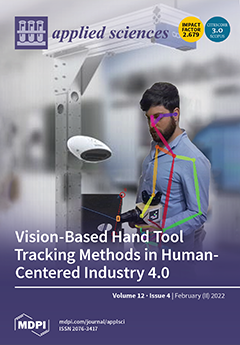Open AccessArticle
Mesenchymal Stromal Cells (MSCs) Isolated from Various Tissues of the Human Arthritic Knee Joint Possess Similar Multipotent Differentiation Potential
by
Mike Wagenbrenner, Konrad Poker, Tizian Heinz, Marietta Herrmann, Konstantin Horas, Regina Ebert, Susanne Mayer-Wagner, Boris M. Holzapfel, Maximilian Rudert, Andre F. Steinert and Manuel Weißenberger
Viewed by 1853
Abstract
(1) Background: The mesenchymal stromal cells (MSCs) of different tissue origins are applied in cell-based chondrogenic regeneration. However, there is a lack of comparability determining the most suitable cell source for the tissue engineering (TE) of cartilage. The purpose of this study was
[...] Read more.
(1) Background: The mesenchymal stromal cells (MSCs) of different tissue origins are applied in cell-based chondrogenic regeneration. However, there is a lack of comparability determining the most suitable cell source for the tissue engineering (TE) of cartilage. The purpose of this study was to compare the in vitro chondrogenic potential of MSC-like cells from different tissue sources (bone marrow, meniscus, anterior cruciate ligament, synovial membrane, and the infrapatellar fat pad removed during total knee arthroplasty (TKA)) and define which cell source is best suited for cartilage regeneration. (2) Methods: MSC-like cells were isolated from five donors and expanded using adherent monolayer cultures. Differentiation was induced by culture media containing specific growth factors. Transforming growth factor (TGF)-ß1 was used as the growth factor for chondrogenic differentiation. Osteogenesis and adipogenesis were induced in monolayer cultures for 27 days, while pellet cell cultures were used for chondrogenesis for 21 days. Control cultures were maintained under the same conditions. After, the differentiation period samples were analyzed, using histological and immunohistochemical staining, as well as molecularbiological analysis by RT-PCR, to assess the expression of specific marker genes. (3) Results: Plastic-adherent growth and in vitro trilineage differentiation capacity of all isolated cells were proven. Flow cytometry revealed the clear co-expression of surface markers CD44, CD73, CD90, and CD105 on all isolated cells. Adipogenesis was validated through the formation of lipid droplets, while osteogenesis was proven by the formation of calcium deposits within differentiated cell cultures. The formation of proteoglycans was observed during chondrogenesis in pellet cultures, with immunohistochemical staining revealing an increased relative gene expression of collagen type II. RT-PCR proved an elevated expression of specific marker genes after successful differentiation, with no significant differences regarding different cell source of native tissue. (4) Conclusions: Irrespective of the cell source of native tissue, all MSC-like cells showed multipotent differentiation potential in vitro. The multipotent differentiation capacity did not differ significantly, and chondrogenic differentiation was proven in all pellet cultures. Therefore, cell suitability for cell-based cartilage therapies and tissue engineering is given for various tissue origins that are routinely removed during total knee arthroplasty (TKA). This study might provide essential information for the clinical tool of cell harvesting, leading to more flexibility in cell availability.
Full article
►▼
Show Figures





